Breaking routine
Two months in and the Tianjin lifestyle is beginning to feel pretty normal.
A day in my life (我的一天) sees me get up, have some oatmeal and coffee, then go to class. At some point I’ll probably go to the gym, relax, study a little or explore the city and then have dinner at the canteen. I think it’s useful to have a routine when you’re getting used to a different place. Although the holiday feeling might disappear, it makes breaking routine and trying something else all the more satisfying.
At the time of writing my last blog, I was also packing to travel to Xi’an (西安) for a week, the city known as China’s ancient capital, the starting point of the silk road and of course, home to the terracotta warriors. In order to make the trip as cheap as possible, we all decided to take the sleeper train from Tianjin, a 20-hour journey with “hard seats” which are admittedly better than they sound… but not by much. That said, I can’t really complain, considering the aisle of the carriage was packed with passengers holding “standing tickets”. I don’t know what’s worse, having no choice but to stand for almost a full day on a hot moving train, or that it’s even an option in the first place. I miss Scotrail.
While the journey to Xi’an could have been better, we arrived with no intentions of wasting time and almost immediately left the hotel to cycle around the city walls. The 9-mile barrier around the inner city was built in the Ming Dynasty and is over 12 feet tall and wide. Riding bikes around Xi’an was a great introduction to the city and helped give a different perspective of it looking in from above.
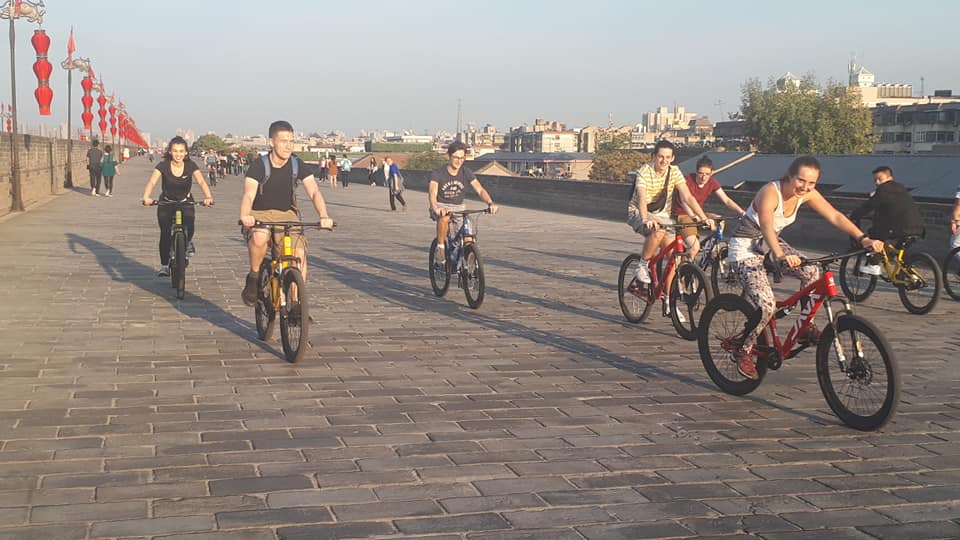
Riding bikes on the city walls of Xi'an.
One of the first things we noticed about Xi’an was how incredibly Chinese it seemed. The city’s traditional architecture, street food and landmarks rang a lot more true to the image of China I had in my head before actually coming here. While Tianjin doesn’t look dissimilar to any other Chinese city, it’s buildings and attractions seem a lot closer to the ones in Europe than anywhere else in China. Each and every city has its own unique character and attractions and as I mentioned in my last blog, you really can find everything somewhere.
The terracotta warriors are probably what most people recognise Xi’an for, with over 5 million tourists visiting the site in 2015 (400,000 during the National day holiday alone) just to take a look at the 4,000 clay warriors on display. They were discovered by chance in 1974 by farmers digging a well in the area, who alerted archaeologists, leading to the unearthing of the largest group of pottery figurines ever found.
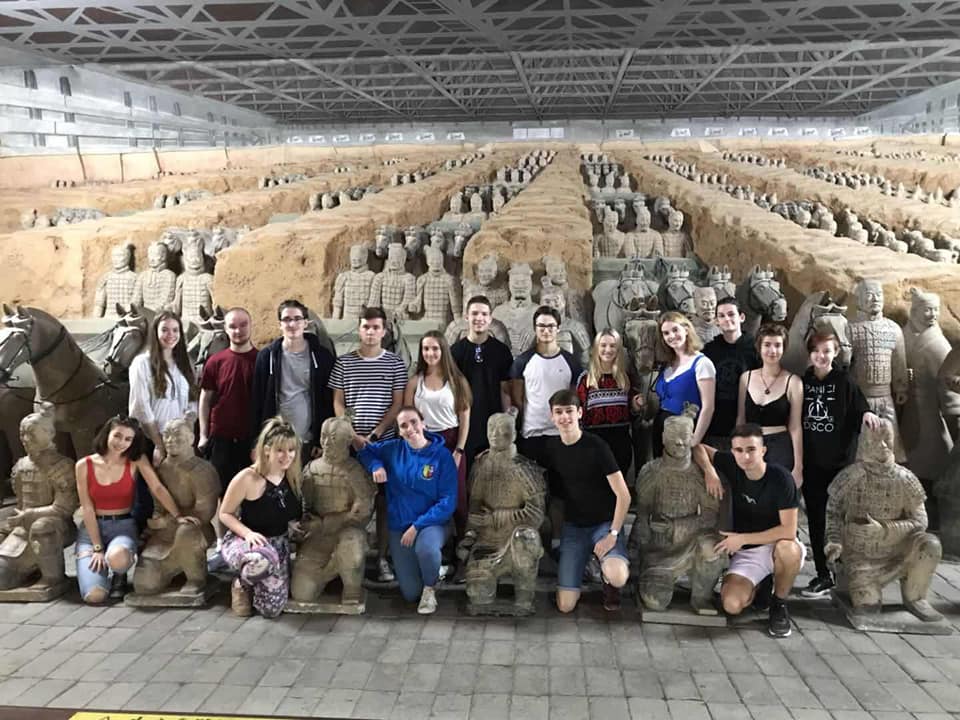
Some definitely real Terracotta Warriors.
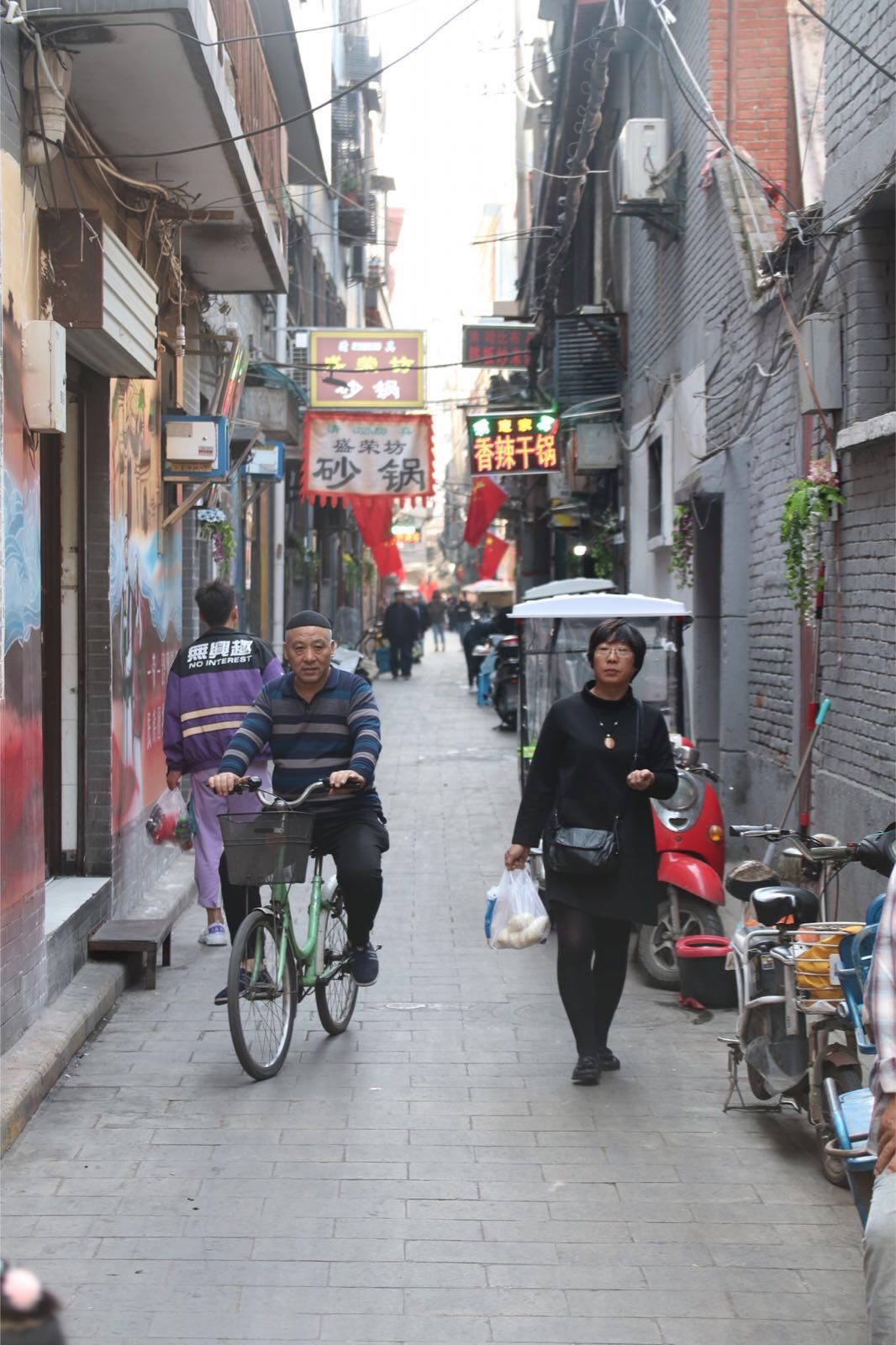
An alley in the Muslim quarter of Xi'an.
There is however a lot more to Xi’an than the terracotta warriors. Ancient structures, scenic parks and authentic culture can be found all over the city. We had plenty of ways to keep ourselves busy for the week, and I think we made the most of our time there, but you could stay a lot longer and still know there were always more places to explore. With our time in Xi’an over, we headed back to the Tianjin the same way we left, this time with a little more food and water for the journey. Classes started, and we quickly got back into our old routines, but it felt good to be back in Tianjin.
No sooner had we got settled back into our day to day lives that we were offered the chance of a weekend trip to Hongyagu in Hebei to visit the longest glass bridge in the world for a fraction of the normal price. Not wanting to miss out, we jumped at the opportunity and again found ourselves packing for another journey (thankfully this one was only 5 hours though).
Hongyagu was spectacular. Although it was a little misty when we climbed the mountain to the bridge, the view was amazing and the ground below us couldn’t be clearer through the glass below our feet. After some getting used to the height and sway of the bridge, we had some time to enjoy the panoramic views and the feeling of walking on air 218 metres above the ground. After walking back down the mountain, we got to experience the scented hot springs of a nearby town, making for possibly the most relaxed evening of my entire life. Although we were only in Hongyagu for a weekend, in some ways, it felt a lot more like a holiday than Xi’an, without all that much planned for any day we were pretty much free to just take it easy for a change.
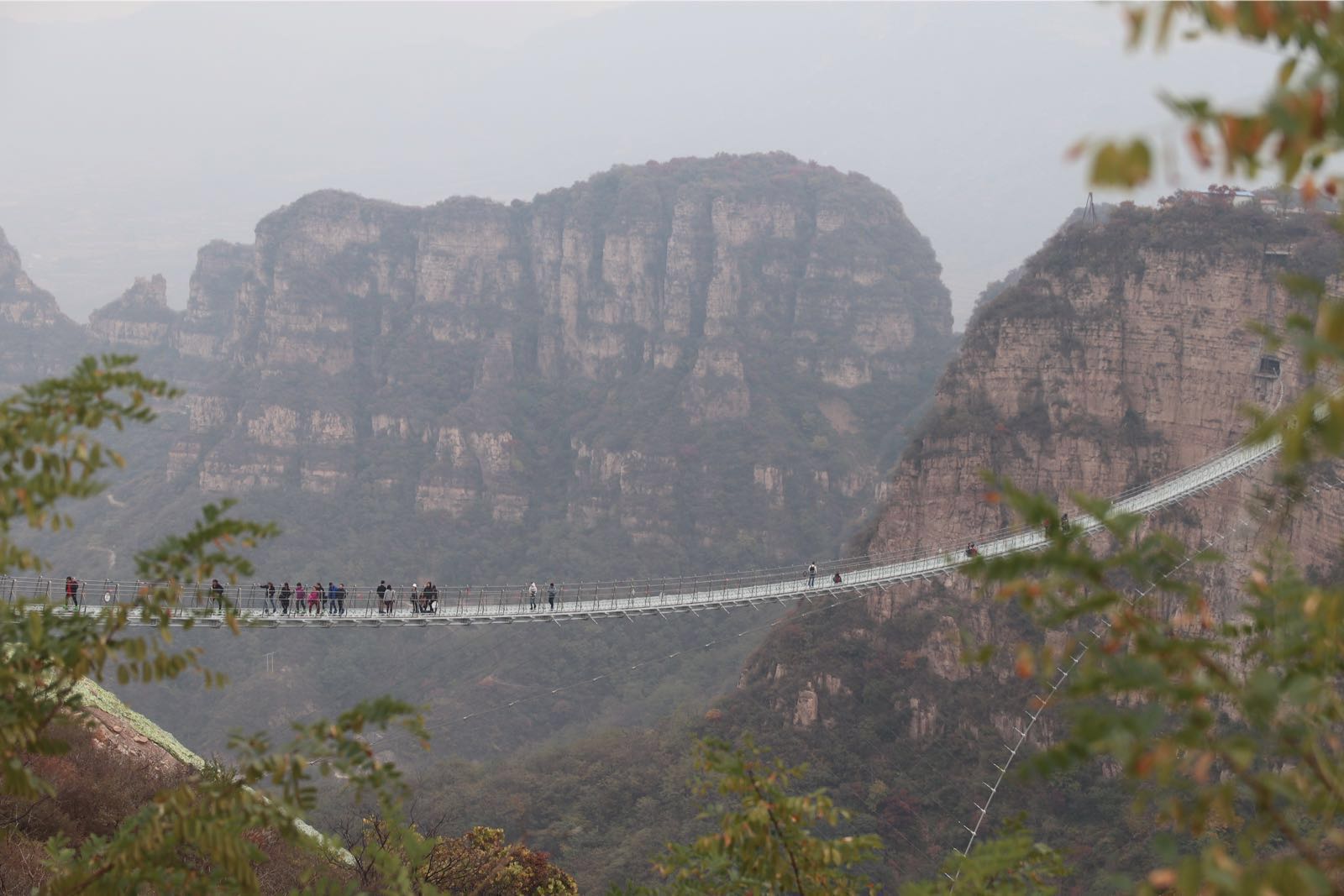
Hongyago Glass Bridge
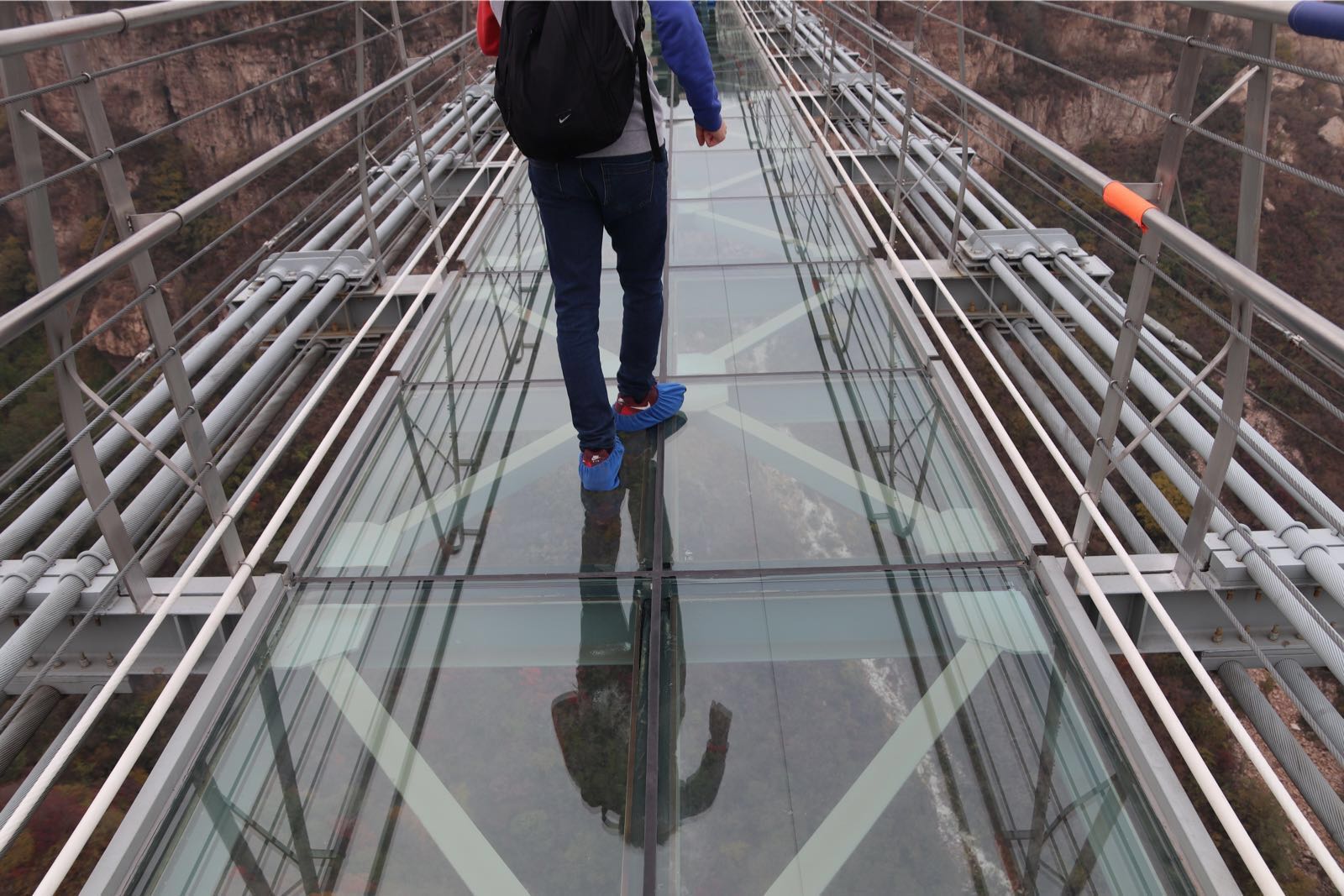
Walking on air.
I’m now back in Tianjin with a little more appreciation for my day to day life, looking forward to travelling to more places in China similar (and entirely different) to the ones above and learning a little more about the country I’m just now beginning to understand.
I’ve made a lot of progress on my Mandarin in the last couple of months and have now passed HSK1 (150 characters). I think as time goes on, it should get easier as I get more used to the tones, grammar and the way the language is built up. Each character is made up of smaller components known as radicals that will usually give some indication as to what the character means. For example, the word for tea (茶) contains the radicals for plant, edible and tree, which make up the whole character. Connections like these are what will allow you to learn more characters rather than trying to memorise each one individually. The best way to learn will always be in talking to real Chinese people though and not being afraid to make mistakes.
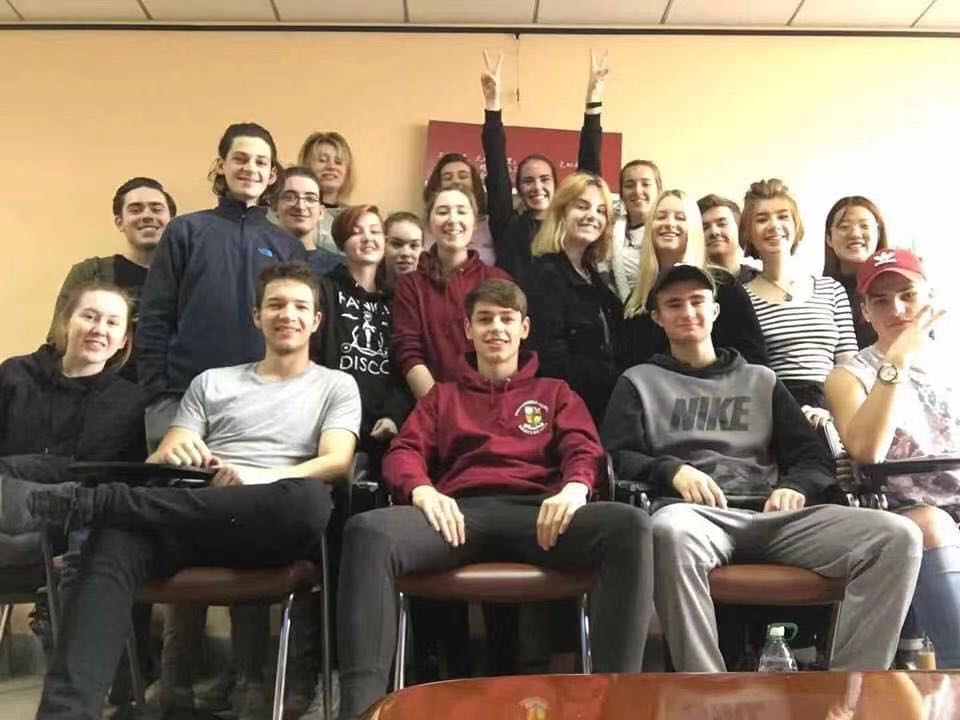
(Speaking of mistakes, my link class in Mid Yell may notice there aren’t any photos of Sheldon the turtle looking down through the glass bridge or facing up to the terracotta warriors in Xi’an. I can say that Sheldon did indeed visit these places, only the photos didn’t quite go to plan. I’ll make sure he comes out of his shell next time though.)
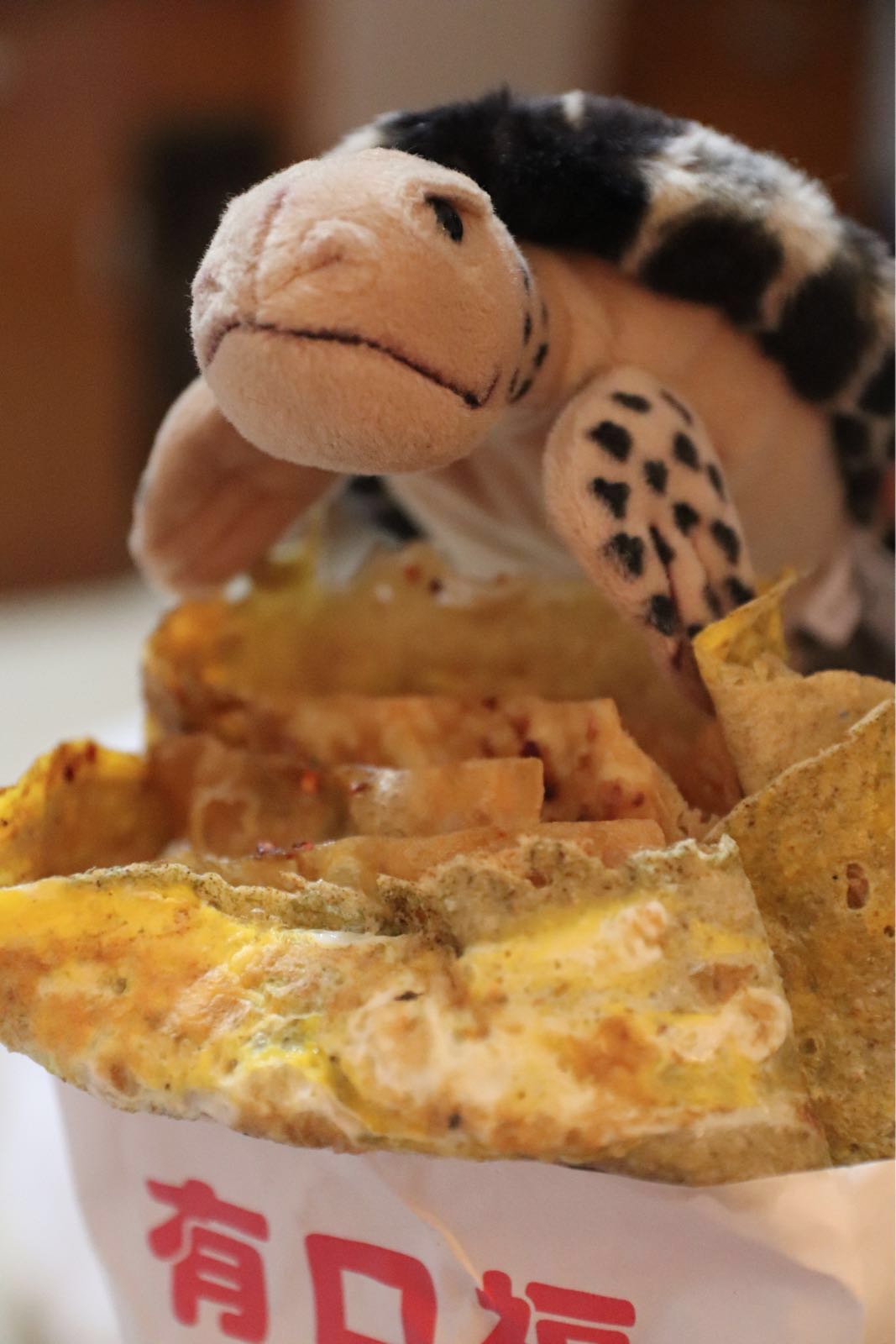
Sheldon enjoys a jianbing (煎饼 - a popular breakfast pancake in Tianjin)